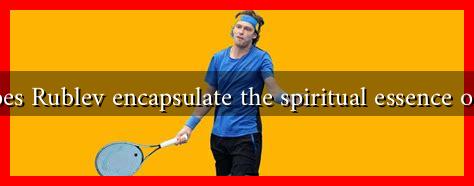-
Table of Contents
How Does Rublev Encapsulate the Spiritual Essence of Russia?
Andrei Rublev, a 15th-century Russian icon painter, is often regarded as one of the most significant figures in the history of Russian art. His works not only reflect the aesthetic values of his time but also encapsulate the spiritual essence of Russia. Through his icons, Rublev conveyed profound theological concepts and a deep sense of spirituality that resonates with the Russian soul. This article explores how Rublev’s art embodies the spiritual essence of Russia, examining his techniques, themes, and the cultural context in which he worked.
The Historical Context of Rublev’s Work
To understand how Rublev encapsulates the spiritual essence of Russia, it is essential to consider the historical and cultural context of his time. The 15th century was a period of significant change in Russia, marked by the rise of the Grand Duchy of Moscow and the decline of the Mongol influence.
. This era saw a resurgence of Orthodox Christianity, which played a crucial role in shaping Russian identity.
- Orthodox Christianity: The Orthodox Church was a unifying force in Russian society, providing spiritual guidance and cultural cohesion.
- Political Turmoil: The political landscape was unstable, leading to a search for spiritual solace and national identity.
- Artistic Renaissance: The period witnessed a revival of artistic expression, with a focus on religious themes that reflected the people’s faith.
Rublev’s Iconography: A Window to the Divine
Rublev’s icons are characterized by their ethereal beauty and profound spiritual depth. His most famous work, “The Trinity,” exemplifies his ability to convey complex theological ideas through visual art. This icon depicts the three angels who visited Abraham, symbolizing the Holy Trinity. The composition, colors, and expressions of the figures invite viewers to contemplate the divine mystery.
- Color Symbolism: Rublev used color to evoke spiritual emotions. For instance, the use of gold signifies divine light, while blue represents the heavens.
- Facial Expressions: The serene expressions of the figures in his icons reflect a deep inner peace, inviting viewers to connect with the divine.
- Spatial Harmony: Rublev’s mastery of composition creates a sense of unity and balance, mirroring the harmony of the spiritual realm.
The Spiritual Themes in Rublev’s Work
Rublev’s icons often explore themes of love, compassion, and the divine presence in everyday life. His works serve as a bridge between the earthly and the heavenly, encouraging viewers to seek a deeper understanding of their faith.
- Divine Love: Many of Rublev’s icons emphasize the theme of divine love, portraying the relationship between God and humanity.
- Community and Fellowship: His works often depict saints and angels in communion, reflecting the importance of community in Orthodox spirituality.
- Transcendence: Rublev’s art invites viewers to transcend the material world and connect with the divine, a central tenet of Orthodox belief.
Legacy and Influence
Rublev’s influence extends far beyond his lifetime. His icons have become symbols of Russian spirituality and cultural identity. The reverence for his work is evident in various aspects of Russian life, from religious practices to national pride.
- National Symbol: Rublev is often seen as a national icon, representing the spiritual heritage of Russia.
- Artistic Inspiration: His techniques and themes have inspired countless artists, both in Russia and abroad.
- Modern Relevance: Today, Rublev’s work continues to resonate, as contemporary artists explore similar themes of spirituality and identity.
Conclusion: The Enduring Spiritual Essence of Rublev
Andrei Rublev’s art encapsulates the spiritual essence of Russia through its profound theological insights, masterful techniques, and deep connection to the cultural context of his time. His icons serve as a testament to the enduring power of faith and the quest for divine understanding. As Russia continues to navigate its complex identity, Rublev’s legacy remains a guiding light, reminding us of the importance of spirituality in shaping the human experience.
For those interested in exploring Rublev’s work further, the Tretyakov Gallery in Moscow houses many of his masterpieces, providing a unique opportunity to experience the spiritual depth of his art firsthand. You can learn more about his life and works at Tretyakov Gallery.





